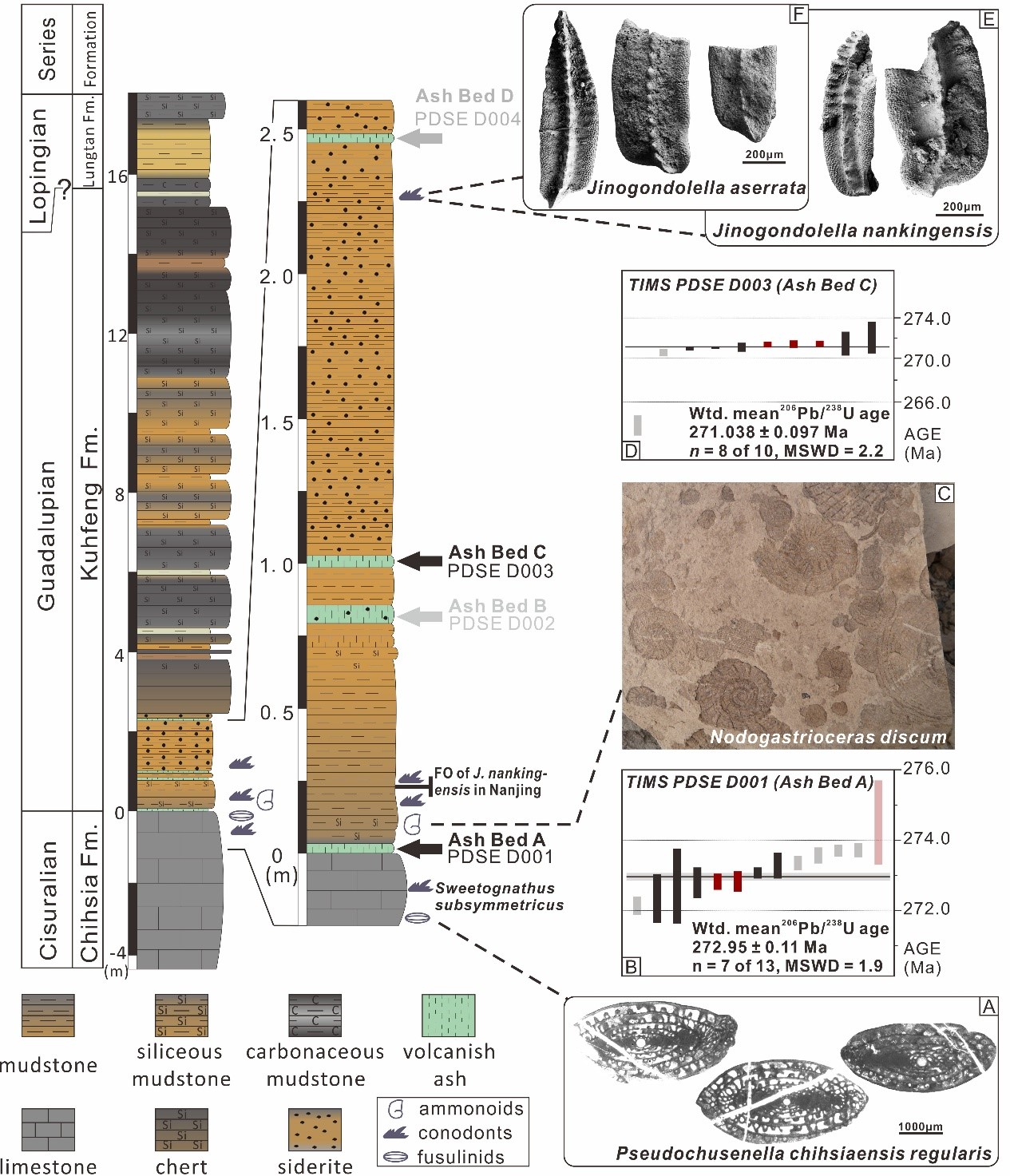
Stratigraphic column and the sample depth in the Kuhfeng Formation at the Pingdingshan East Section in Chaohu City, Anhui Province.
The Guadalupian Epoch represents one of the most critical intervals during the Earth history which is characterized by a series of global geological and biological events. Establishing the Guadalupian geological timescale is essential for evaluating the tempo of global geological events occurred in the Guadalupian. However, the Guadalupian is poorly constrained by radioisotopic dates in comparison with the high-precision dates from the Lopingian and lowest Triassic in South China and the Cisuralian in southern Urals, Russia.
Recently, Dr. ZHANG Hua from Nanjing Insititute of Geology and Palaeontolgy, Chinese Academy of Sciences and his colleagues reported combined CA-ID-TIMS and SIMS U-Pb zircon geochronology for three ash beds from the base and lower part of the Kuhfeng Formation in the Chaohu area, southeastern China. The basal Kuhfeng Formation volcanic ash yields a CA-ID-TIMS weighted mean 206Pb/238U date of 272.95 ± 0.11 Ma (MSWD = 1.9, n = 7). That serves as the best estimate for the age of CGB in South China for the first time. This new date is 0.65 ± 0.51 myr older than the interpolated Cisuralian-Guadalupian boundary age from 2016 International Chronostratigraphic Chart (ICC) or the 2012 Geologic Time Scale, and is an improvement to the previous stage boundary calibrations. The new geochronology increases the duration of the Guadalupian Epoch to 13.85 ± 0.51 myr, 1.35 ± 0.57 myr longer than that of the ICC 2016.
This work is supported by NSFC (41420104003, 41290260 and 41273081) and the Strategic Priority Research Program (B) of the Chinese Academy of Sciences (XDB18030400).
Wu, Q., Ramezani, J., Zhang, H.* (Corresponding author), Wang, T.T., Yuan, D.X., Mu, L., Zhang, Y.C., Li, X.H., Shen, S.Z., Calibrating the Guadalupian Series (Middle Permian) of South China, Palaeogeography, Palaeoclimatology, Palaeoecology. http://dx.doi.org/10.1016/j.palaeo.2016.11.011.
Download:
